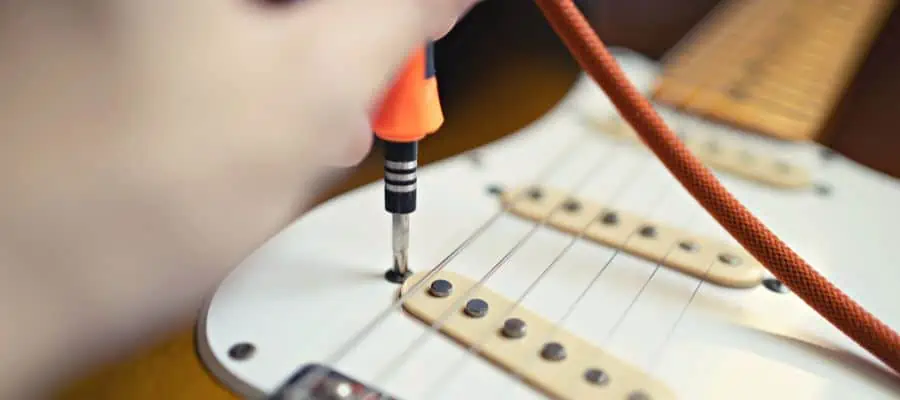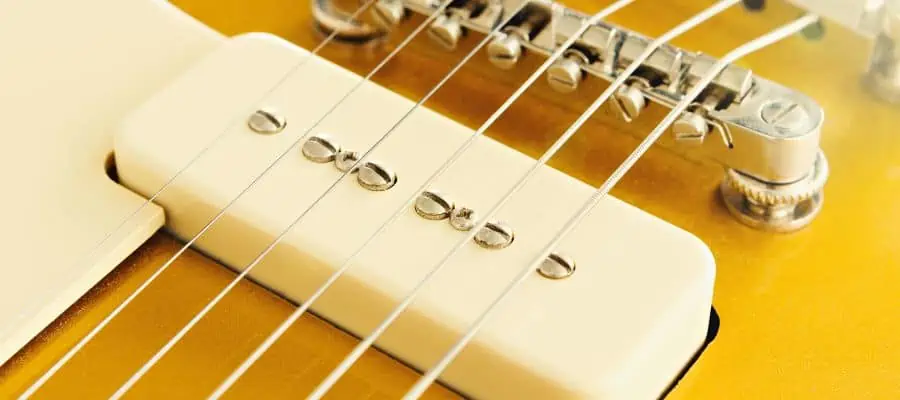Many beginner guitarists ponder the question: does pickup height affect guitar sustain? It’s an essential question for shaping your guitar’s tone and understanding the mechanics behind it can take your playing to new heights.
Pickup height affects guitar sustain by modulating the magnetic field strength around the strings. Closer pickups capture more vibrations for longer sustain, but too close can cause distortion and reduce sustain.
In this in-depth guide, I’ll explore the intricate relationship between pickup height and guitar sustain, drawing on practical examples and expert insights. I’ll also delve into other factors that can influence sustain and provide actionable tips to improve it.
How Are Pickup Height and Sustain Related?

In the world of electric guitars, the magnetic pickups are responsible for converting the vibrations of the strings into an electrical signal, which is then amplified and transformed into sound.
The height of these pickups—how close they are to the strings—plays a vital role in this process.
The basic principle is straightforward: the closer the pickup is to the strings, the stronger the magnetic field it creates, which, in turn, can capture more of the strings’ vibrations. This increased capture can result in increased sustain, making your notes ring out for a longer period.
However, as is often the case with guitars, it’s not quite as simple as “closer equals more sustain.”
If a pickup is too close to the strings, it can interfere with the strings’ natural vibration, leading to unwanted distortion and potentially reducing sustain.
Finding the Ideal Pickup Height

Given the delicate balance between pickup height and sustain, finding the ideal pickup height for optimal sustain can be something of a Goldilocks scenario.
It’s not a matter of too high or too low but just right—and that “just right” can vary depending on several factors.
These factors include the type of pickup (single-coil or humbucker, for instance), the player’s personal preferences, and the specific tone they’re aiming for.
As a general rule, though, a good starting point is to adjust the pickup height so that the distance between the pickup and the strings is around 1/8 inch (3.2mm).
The key to finding your ideal pickup height is experimentation. Some players prefer to set their pickup as low as possible and then gradually raise it until they find a sound they like. Others prefer the opposite approach, starting with the pickup high and gradually lowering it.
There’s no right or wrong here, only what sounds best to your ears.
Factors That Influence Sustain

While pickup height plays a significant role in sustain, it’s not the only factor. The type of wood used in the guitar body, the quality of the strings, and the player’s technique can influence how long a note rings out.
Heavier strings, for example, tend to produce more sustain than lighter ones, as their increased mass allows them to vibrate for longer. Similarly, denser woods like mahogany or maple tend to resonate longer than lighter woods like basswood or alder, leading to more sustain.
Playing technique also has a substantial impact on sustain. Techniques like legato (smooth, connected playing) or using a compressor pedal can increase sustain, while aggressive picking or palm muting can decrease it.
Improving Sustain: A Comprehensive Approach

When it comes to improving sustain, there’s no “one-size-fits-all” solution. Here are some practical tips:
Get Some Quality Strings
The strings are the heart of your guitar’s sound. High-quality strings will vibrate more freely and sustain longer than lower-quality ones.
But what exactly makes a string high-quality?
Typically, it comes down to the materials used and the precision in manufacturing. Brands like Ernie Ball, D’Addario, and Elixir are renowned for their consistent quality.
Ensure Your Guitar is Properly Set Up
Having your guitar set up correctly is crucial for achieving optimal sustain. Here’s how the various aspects of guitar setup can affect sustain:
- Action: Action refers to the distance between the strings and the fretboard. If the action is too high, the strings may not vibrate freely, reducing sustain. If too low, you might experience fret buzz, which can cut your sustain short.
- Intonation: If your guitar’s intonation is off, the strings might not vibrate optimally, reducing sustain. Proper intonation ensures that your guitar is in tune across the entire fretboard.
- Truss Rod Adjustment: The truss rod helps adjust the curvature of the neck. If the neck is too straight or too bowed, it could impact the string’s vibration and thus affect sustain.
- Pickup Height: As discussed earlier, adjusting your pickup height can directly impact your guitar’s sustain.
Each of these adjustments requires a degree of knowledge and precision. If you’re not confident in doing this yourself, it might be best to take your guitar to a professional for setup.
Experiment
Finally, don’t be afraid to experiment. There’s a lot of scope for adjusting and tweaking in the quest for perfect sustain. Trying out different string gauges, pickup heights, and picking techniques can all lead to surprising discoveries.
For instance, you might find that a hybrid set of strings (lighter on the high strings, heavier on the low) gives you the best combination of playability and sustain. Or you might discover that picking the strings at a particular angle increases their vibration and sustain.
The world of guitar playing is full of personal preferences and unique discoveries, and what works for one guitarist might not work for another. Keep an open mind, trust your ears, and don’t stop experimenting.
Use A Compressor Pedal
Finally, using a guitar pedal is the easiest way to increase your sustain. They can come in a physical form, built-in into the amp you are using, or via plugins on your computer.
If you have a modeling amp, it probably already has a compressor effect built-in; you don’t know it. Another way is playing guitar through your PC/Laptop using an interface and using amp simulators like Guitar Rig or Bias Fx 2, which has this effect as well.
Final Thoughts
Mastering your guitar’s sustain is a journey, not a destination. It requires a deep understanding of your instrument, an openness to experimentation, and the ability to tune into subtle nuances in sound.
But the result – a rich, resonant sound that fills a room and captivates an audience – is well worth the effort.
If you found this article useful, you may want to save this pin below to your Guitar board.

Recent Posts
Some guitarists insist on buying an expensive amplifier with their electric guitar. They assume that this is a must for every type of guitarist out there. However, in some situations, this isn’t...
Top 50 Free Realistic Guitar VST Plugins With Sound Examples
As technology has rapidly advanced in the recent decade, computers are stealing more and more roles from physical musical instruments and accessories. Nowadays, you do not need expensive amps,...

